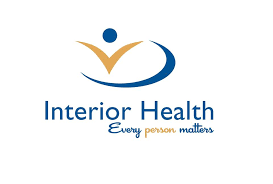Boundary Hospital renal services get boost
Interior Health is improving the renal unit at Boundary Hospital thanks to approximately $30,000 in funding for site renovations from Interior Health and the Grand Forks Hospital Auxiliary and more than $213,000 in funding for additional equipment from the BC Renal Agency.
“This new equipment will allow staff to care for more patients at Boundary Hospital at a given time, and in a much more comfortable setting,” said Minister of Health Services Colin Hansen. “The Province is focused on efforts to prevent kidney disease and reduce the need for dialysis through early detection and diet, medication and lifestyle adjustments, but it is also important that we are making sure those who have kidney disease get the care they need as close as possible to their home communities.”
In the Boundary Hospital Community Dialysis Unit, stable patients receive dialysis on Mondays, Wednesdays and Fridays. Approximately $30,000 in funding from Interior Health and the Grand Forks Hospital Auxiliary created the opportunity to move the unit to a larger space in the hospital.
In 2009/10, BC Renal Agency funded a new reverse osmosis machine for $63,000. The BC Renal Agency provided a total of $150,000 in funding in 2010/11 – $30,000 for an extra dialysis machine and $120,000 to replace the current machines in Grand Forks. The new dialysis machines will be delivered in April. Prior to the arrival of the new machines, a spare machine from Trail will be added to Boundary Hospital.
This new equipment allows Interior Health to add a fourth dialysis station to the three it had operated to date. The new space will also be more comfortable as it has a better floor plan, with more room for patients and for staff providing care.
“These community dialysis units and the use of telehealth technology let Interior Health bring renal services home to people in our rural communities across the Kootenays. It is great to see these ongoing upgrades being made for patients who need this care,” said Norman Embree, IH Board Chair.
About half a dozen patients currently receive dialysis treatment in Grand Forks. In addition to various forms of dialysis treatment, the Kootenay Boundary service provides a robust program that includes renal health education, nutritional information, and social supports for residents with chronic kidney disease. Approximately 600 patients from the East Kootenay and Kootenay Boundary receive care through the Kootenay Renal Program each year.
“Our goal with this program is to ensure patients are receiving the best care possible in the most comfortable setting, whether that is in the acute unit at Kootenay Boundary Regional Hospital, in our community sites like the one in Grand Forks, or through our home dialysis program,” said Maureen Lewis, Manager for the Kootenay Regional Renal Program.
The community dialysis unit at Boundary Hospital and other Kootenay sites (Creston, Invermere, Cranbrook and Sparwood) are part of the network of renal services provided through Interior Health in the Kootenays with support from the BC Renal Agency (www.bcrenalagency.ca), part of the Provincial Health Services Authority.
BC Renal Agency’s efforts together with the regional health authorities’ work on innovative ways to identify and treat kidney disease earlier have reduced the annual dialysis growth rate from 16 to five percent, even though the number of people diagnosed with early stage kidney disease has grown an average of 26 per cent per year since 2001 (over 500 per cent in that period).
In fact, BC is the only place in North America offering a fully coordinated system of renal care for kidney patients. No matter where they live in the province, kidney patients have access to the same level of care and a variety of treatment options. And people with kidney disease in BC have better health outcomes than kidney patients elsewhere in Canada






















